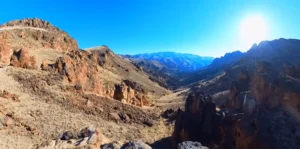Shiloh National Military Park: A Historic Battlefield Journey with Rich Heritage
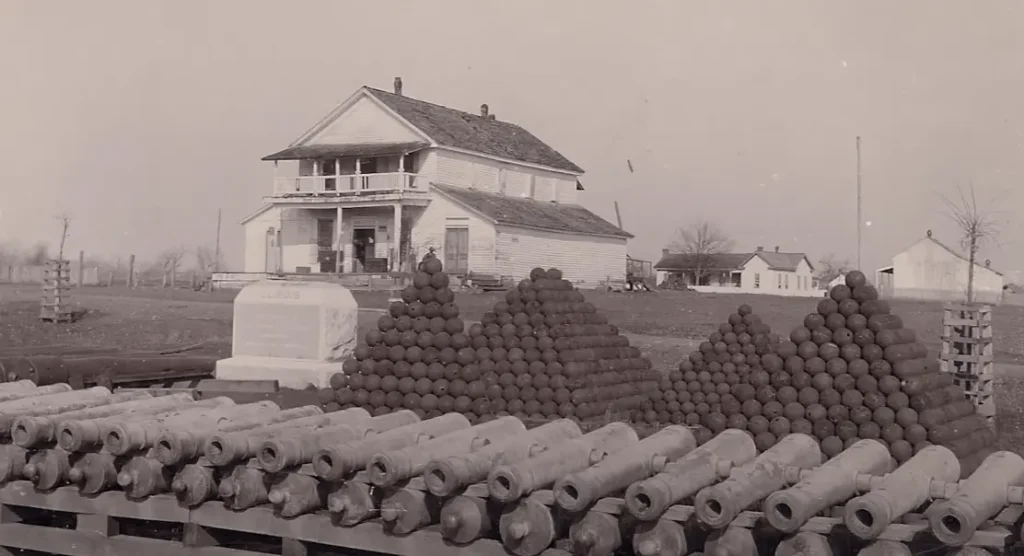
Introduction
Shiloh National Military Park, this historic battlefield, preserved since the 1890s, offers a glimpse into the Civil War era and the significant events that unfolded on its grounds. Situated along the Tennessee River, Shiloh National Military Park covers vast acres of land, providing visitors with a picturesque setting. Accessible by road, the park is well-connected, making it a convenient destination for history enthusiasts and curious travelers. This expansive park, not only preserves the memories of a pivotal moment in history but also offers a unique and educational experience for visitors.
Visitor Center
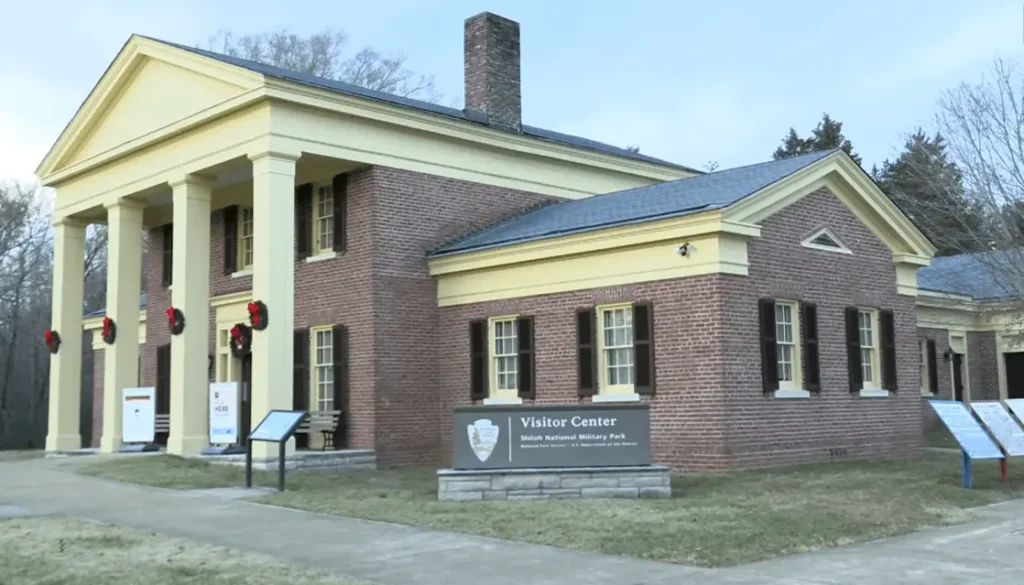
Shiloh National Military Park has a visitor center. The center houses numerous artifacts from the battle, including flags, cannons, tools, and other items. Additionally, the visitor center screens a film every hour that provides insights into the battle. We highly recommend watching this film before embarking on your park tour, as it offers valuable background information that enhances the significance of your visit.
Preservation Efforts
The establishment of Shiloh National Military Park was a pivotal moment in itself. The park was created to preserve the battlefield and its historical structures. Ongoing conservation initiatives, including archaeological studies and restoration projects, contribute to maintaining the site’s authenticity.
Notable Monuments and Memorials
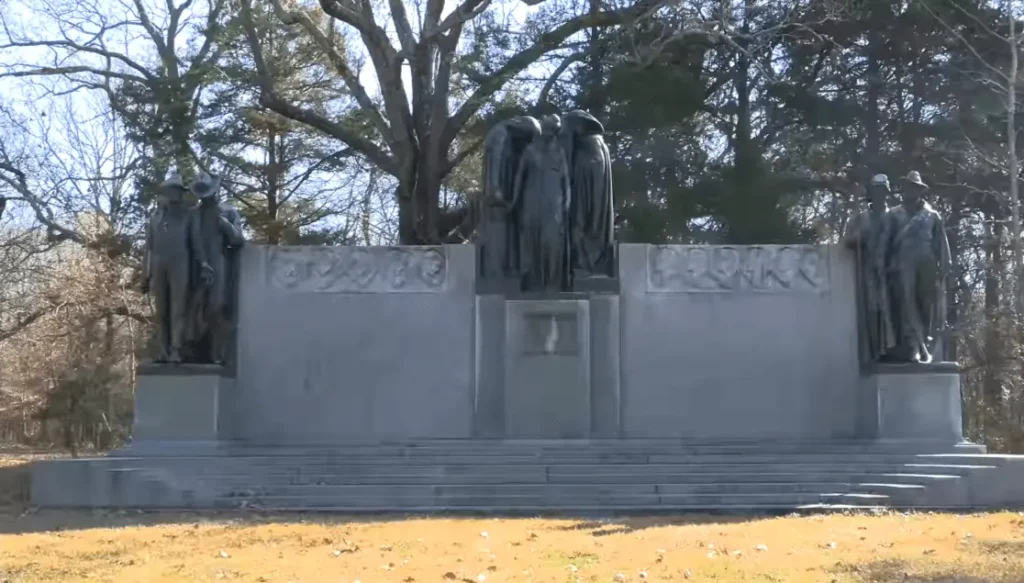
The park is adorned with monuments and memorials that pay homage to the soldiers who fought bravely. Each structure holds its historical significance, serving as a tangible connection to the past and a reminder of the human cost of war.
Overview of Significant Structures
From the towering Shiloh National Cemetery Arch to the intricate details of individual soldier memorials, the park’s architecture reflects the diversity of those who played a role in the battle.
Visitor Experience
Facilities and Amenities Available To enhance the visitor experience, Shiloh National Military Park offers various facilities, including visitor centers, interpretive exhibits, and well-maintained trails. The park is designed to accommodate individuals, families, and school groups, providing a welcoming environment for all.
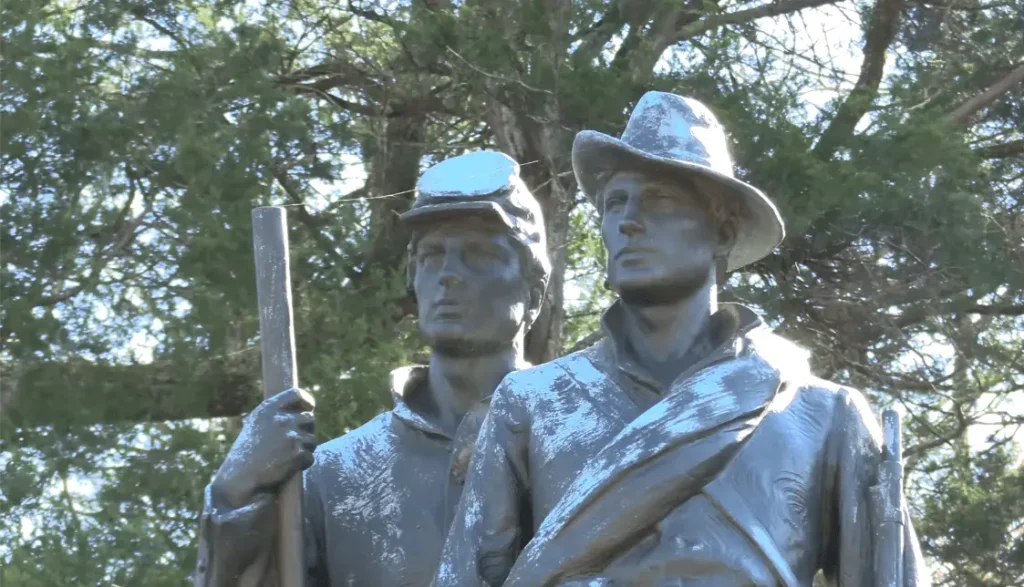
Engaging guided tours and educational programs cater to different interests and age groups. Whether you’re a history buff or a casual visitor, these initiatives ensure a comprehensive understanding of the park’s significance. Conservation initiatives focus on protecting the park’s diverse ecosystems, allowing visitors to appreciate not only the historical aspects but also the beauty of the surrounding environment.
Flora and Fauna
Biodiversity Within the Park Beyond its historical importance, Shiloh National Military Park boasts rich biodiversity. The park’s commitment to conservation includes efforts to preserve its natural habitats, creating a harmonious balance between history and nature.

Battle of Shiloh: Historical Significance
Battle of Shiloh Background The Battle of Shiloh, fought in April 1862, marked a turning point in the Civil War. Understanding the historical context is crucial to appreciating the park’s significance. The clash between Union and Confederate forces had far-reaching consequences, and Shiloh National Military Park commemorates the bravery and sacrifice of those involved.
Exploring the park allows visitors to retrace the steps of soldiers and witness key locations where significant events unfolded. Interpretive markers and guided tours provide a detailed account of the battle, creating an immersive experience for history enthusiasts.
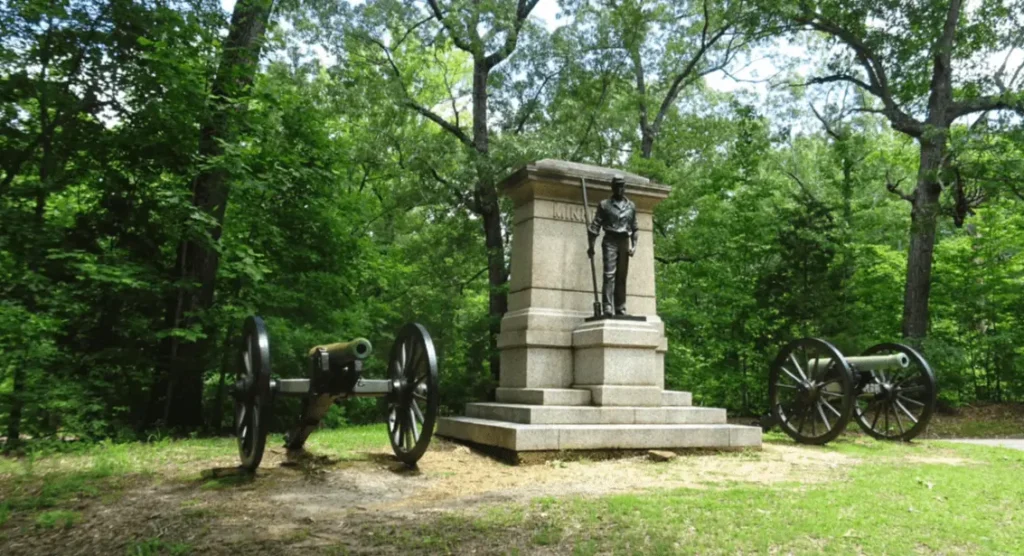

Pittsburgh Landing
Pittsburgh Landing Tour Starting our exploration from the Visitor Center, we traverse the grounds of Pittsburgh Landing, a key staging area for Union forces during the Battle of Shiloh. The industrial and transportation aspects of the war come to life in this picturesque setting along the Tennessee River.
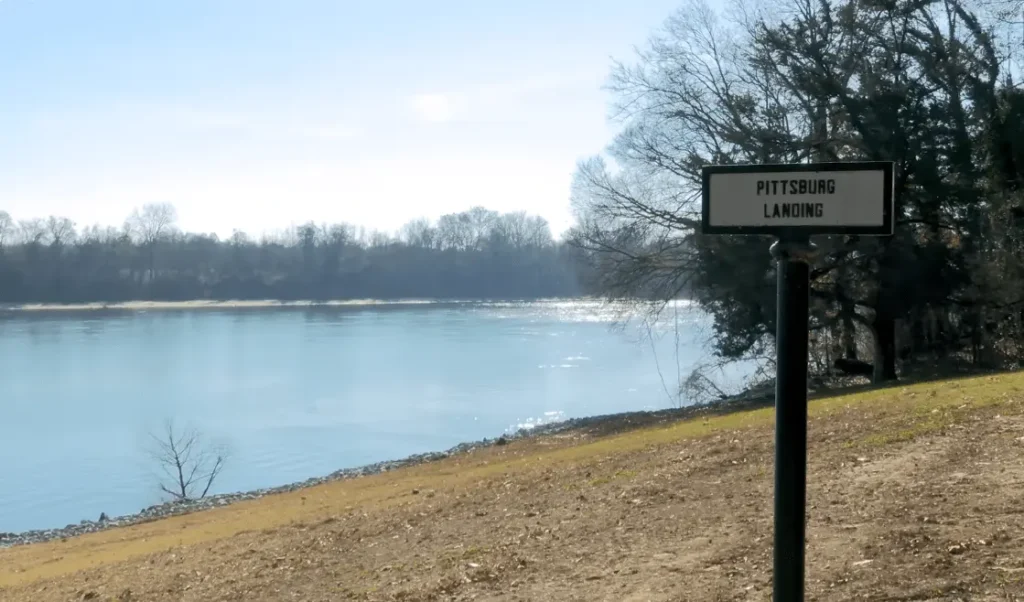
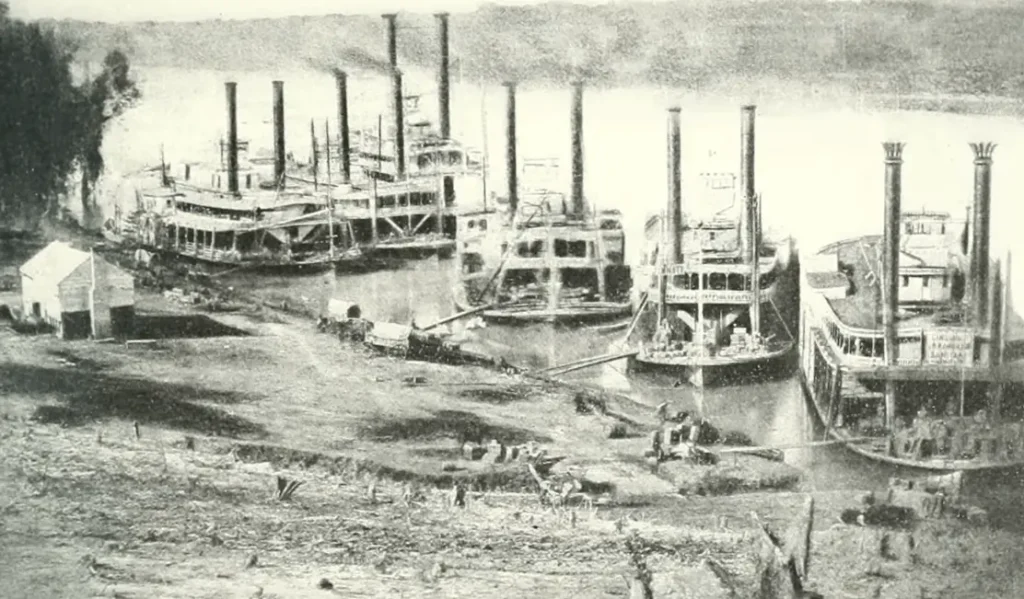
Grant’s Last Line of Defense
Heading uphill to the high ground, we witness Grant’s last line of defense, a crucial turning point in the battle. The landscape, altered over the years, reflects the decisions and strategies that led to a significant Union victory.
Significant Sites Along the Tour Route
Join us as we visit notable sites like Shiloh Church, Duncan’s Sunken Road field, and Review Field. The historical significance of each location is brought to life as we uncover the unique history preserved at Shiloh National Military Park.
Shiloh Church
Shiloh Church, named after the pivotal battle. Unexpectedly, we stumbled upon an eagle nesting area, serving as a reminder that national parks not only protect the living but also preserve historical memories.
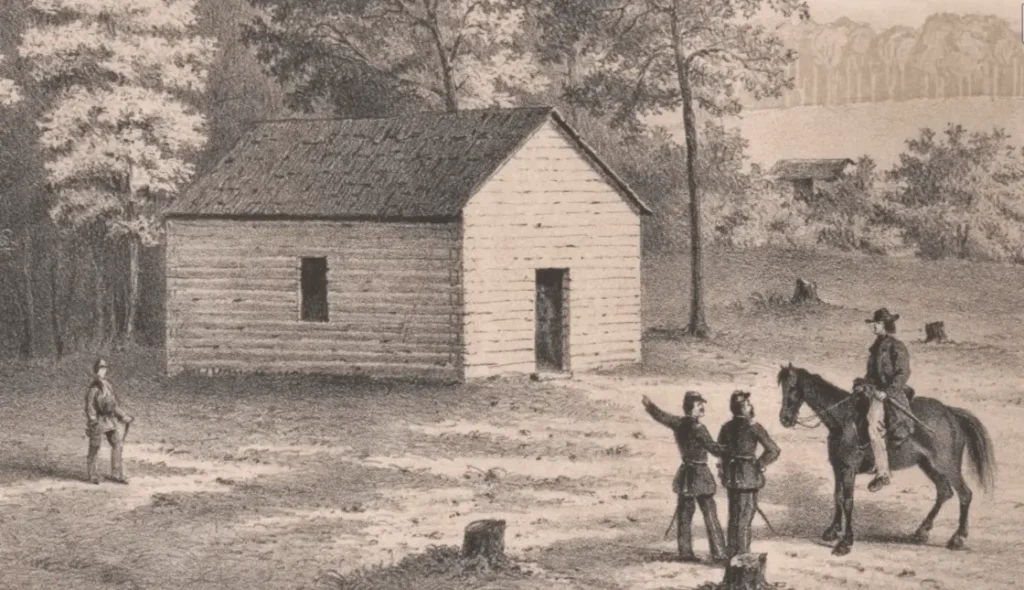
Exploring Key Battlefield Features
Moving through Calvary Field, Jones Field, and Peach Orchard, we examine crucial terrain features and historical sites where intense fighting occurred. The narrative weaves together historical details, geographical features, and the chronological progression of events during the Battle of Shiloh.
Albert Sidney Johnston’s Death Site
As we reach the crossroads, we delve into the significance of the Hamburg Savannah Road, focusing on Albert Sidney Johnston’s leadership and sacrifice. The iconic tree associated with Johnston’s discovery becomes a symbol, reflecting the historical context of the battle.
Shiloh National Cemetery
Shiloh National Cemetery, where we acknowledge the profound impact of the battle on the soldiers buried there. Shiloh is also home to a National Cemetery, which holds special significance, especially on Memorial Day.
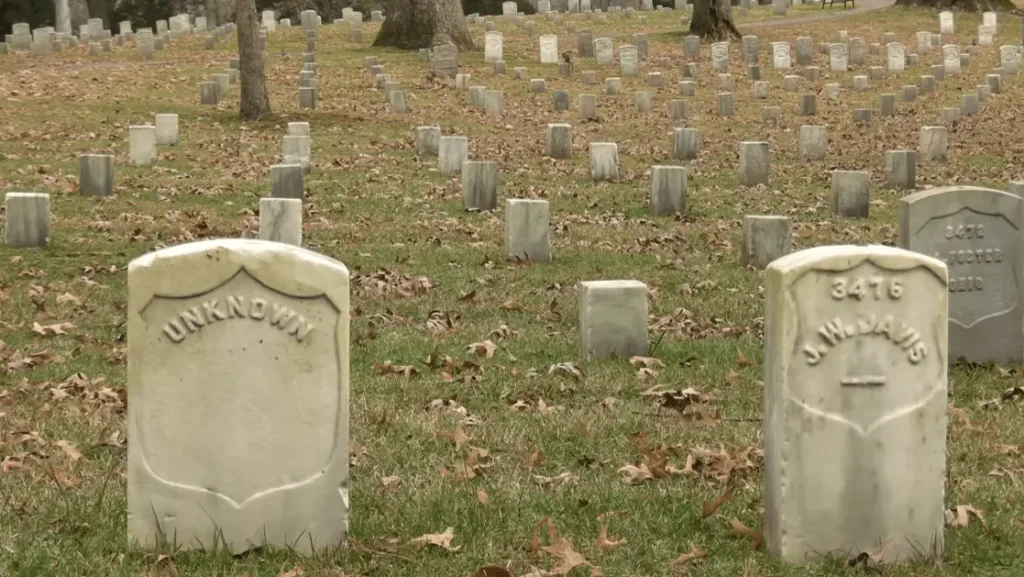
History and Purpose
The Shiloh National Cemetery, within the park, serves as a final resting place for soldiers. Understanding the history and purpose of the cemetery adds a solemn dimension to the overall experience.
Prominent Graves and Markers
Notable graves and markers within the cemetery highlight the stories of individuals who played significant roles during the Battle of Shiloh. Each grave serves as a poignant reminder of the human toll of war. The significance of the cemetery in reflecting on the sacrifices made during the Civil War.
Shiloh: A Pivotal Moment in 1862 Civil War Campaigns
A Turning Point in 1862: Ulysses S. Grant’s Success in the West In February 1862, the Union forces, led by General Ulysses S. Grant, achieved a significant breakthrough in the Western theater of the Civil War. By capturing Fort Henry on the Tennessee River and Fort Donelson on the Cumberland River, Grant opened up access to the deep South, breaking the Confederate western front.
Nashville Abandoned: Union Advances and Confederate Retreats
As a result of Grant’s success, Nashville was abandoned on February 15th, with Confederate forces retreating to Murfreesboro and then further south into northern Alabama. Simultaneously, General Don Carlos Buell’s army advanced from Louisville, Kentucky, occupying Nashville on February 23rd. This marked the fall of the first major Confederate capital in the West.
Strategic Shifts on the Mississippi: Confederate Strongholds Vulnerable
In the west, the Confederate stronghold at Columbus, Kentucky, became vulnerable, leading to the garrison’s retreat to New Madrid, Missouri. Meanwhile, General Pierre Beauregard’s arrival prompted the re-establishment of the western Confederate center at Corinth, Mississippi.
Union Advances and Confederate Retreats: Converging Forces at Corinth
Union General Pope’s attack on New Madrid in March 1862 forced Confederate forces to retreat to Island Number 10 on the Mississippi River. Confederate forces, under Johnston and Beauregard, reorganized at Corinth, pulling troops from various locations. By April 1862, the Army of the Mississippi, with 40,000 men, was formed, capturing Grant’s attention due to Corinth’s strategic importance.
Grant’s Strategic Moves: Setting the Stage for Battle
Grant’s headquarters moved to Savannah, Tennessee, and his army unloaded at Pittsburgh Landing, just 20 miles northeast of Corinth. Grant planned to strike once his army rendezvoused with Buell’s Army of the Ohio, which had advanced to Columbia in early April.
Confederate Plans and Delays: The Battle Looms
However, Johnston and Beauregard saw an opportunity to strike Grant’s isolated Army of the Tennessee before Buell could arrive. The preparations for an attack on Grant’s forces were underway. Delays plagued the Confederate forces, allowing Buell’s army to approach closer to Savannah.
Union Ironclad Threatens Confederate Defenses: Island Number 10 Under Pressure
As the Confederate forces faced setbacks, a Union ironclad named the “Cairo” sailed to New Madrid, Missouri, passing Confederate defenses at Island Number 10. General Pope now had an ironclad to support Union efforts in the theater, putting Island Number 10 under threat.
The Battle of Shiloh: Confederate Forces Ready for Attack
The narrative then zooms in on Pittsburgh Landing, where Grant’s 40,000-man army was forming. The Tennessee River, Owl Creek, and natural boundaries shaped the terrain. Confederate General Johnston planned to strike Grant’s isolated army before Buell could arrive. The Confederate Army advanced towards Pittsburgh Landing on April 3rd, but delays due to rain and muddy roads hampered their progress.
Confederate Movements and Union Awareness: The Eve of Battle
By April 4th, Confederate forces were near Grant’s army, but continuous delays, including at a road junction, forced a postponement of the attack. Meanwhile, Union General Buell’s army approached closer to Savannah. The plan was to move early on April 5th, but rain-soaked roads delayed the Confederate attack again.
The Battle Unfolds: April 6th, 1862
As the sun set, 40,000 Confederate soldiers were just beyond Union pickets. The morning of April 6th marked the beginning of the Battle of Shiloh. General Prentice received reports of rebel infantry nearby, and as the morning unfolded, the battle intensified, with Confederate forces launching attacks and Union forces attempting to hold their ground.
Intense Fighting and Critical Decisions: The First Day Concludes
The narrative describes the events of April 6th, covering the movements and engagements on both the Confederate and Union sides. The struggle for key positions, such as the Sunken Road and Peach Orchard, is detailed, with units facing intense fighting and commanders making critical decisions. The narrative concludes with the end of the first day of the Battle of Shiloh, setting the stage for the developments on the following day.
Shiloh National Military Park
Annual Events and Festivals
Commemorative Events Shiloh National Military Park hosts annual events and festivals that bring history to life. Commemorative ceremonies, reenactments, and special programs provide opportunities for visitors to engage with the past in a meaningful way.
Participation Opportunities for Visitors
Visitors can actively participate in various events, fostering a sense of connection to the historical narrative. These opportunities create lasting memories and contribute to the park’s vibrant community.
Impact on Local Community
Economic and Cultural Contributions Beyond its historical and educational value, Shiloh National Military Park plays a crucial role in the local community. The influx of visitors contributes to the local economy, and the park’s cultural significance enhances the community’s identity.
The Emotional Impact of the Site
Standing on the hallowed ground where history unfolded evokes powerful emotions. Visitors often express a profound connection to the past, making their visit a deeply moving experience. Testimonials and Stories from Visitors The park’s impact extends beyond facts and figures; it’s a place of personal reflection. Testimonials and stories from visitors underscore the emotional resonance of Shiloh National Military Park.
Social Media Presence
Shiloh National Military Park on Various Platforms In the digital age, the park maintains a robust social media presence. Platforms like Instagram, Facebook, and Twitter allow the park to connect with a broader audience, sharing updates, historical insights, and engaging content.
Encouraging user-generated content fosters a sense of community among park enthusiasts. Engaging with followers through comments, shares, and interactive content enhances the park’s online presence.
Conclusion
In conclusion, Shiloh National Military Park stands as a living history book, inviting visitors to explore the past and gain a deeper understanding of the sacrifices made during the Battle of Shiloh. By preserving both its historical and natural elements, the park ensures that future generations can connect with this pivotal moment in American history. You can visit more National Parks like Yellowstone National Park: Guide to the Hidden Gems and Lesser-Known Treasures, Top Things You NEED To Do In Glacier National Park
FAQs
- Is Shiloh National Military Park suitable for families with children?
• Absolutely! The park provides educational programs and engaging activities for visitors of all ages. - Are pets allowed in Shiloh National Military Park?
• While pets are allowed in certain areas, it’s essential to check park regulations and guidelines for pet-friendly zones. - Can I take photographs within the park?
• Yes, visitors are encouraged to capture their experiences. However, some restrictions may apply, especially in sensitive areas. - What is the best time to visit Shiloh National Military Park?
• Spring and fall offer pleasant weather, making them ideal seasons to explore the park. Check the park’s website for specific events and programs throughout the year. - How long does it take to tour the entire park?
• The duration of your visit depends on your interests. Guided tours can range from a few hours to a full day, allowing for a comprehensive exploration of the park’s offerings.


